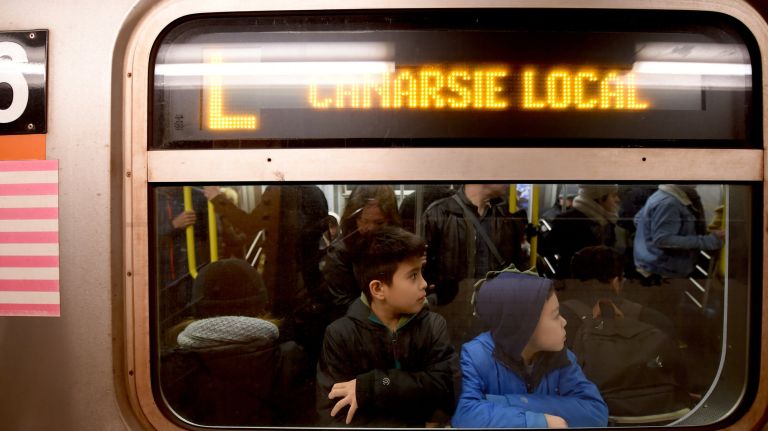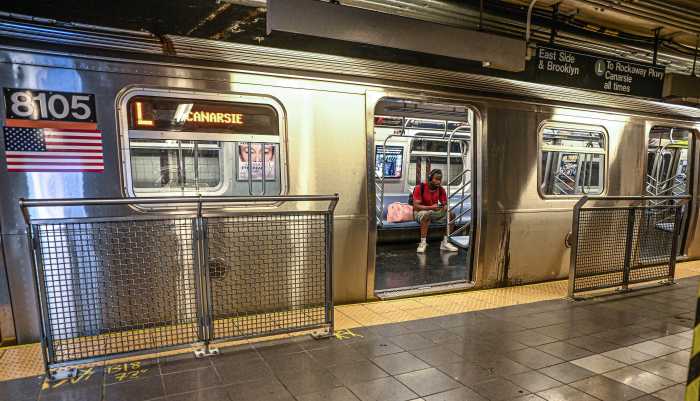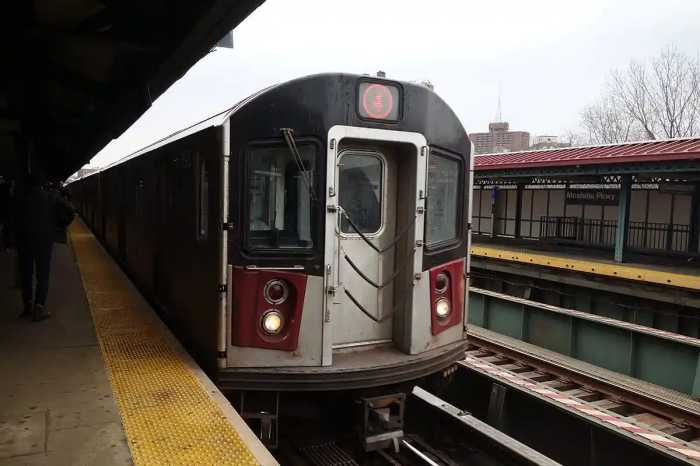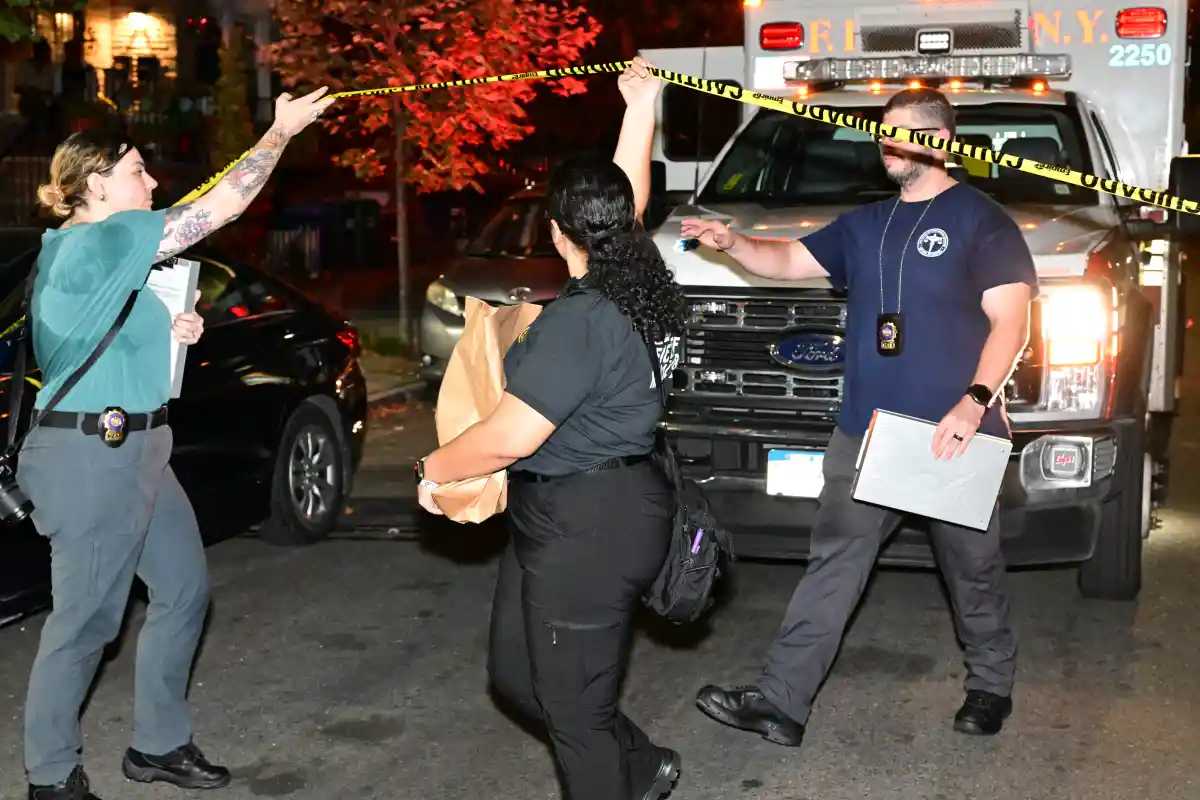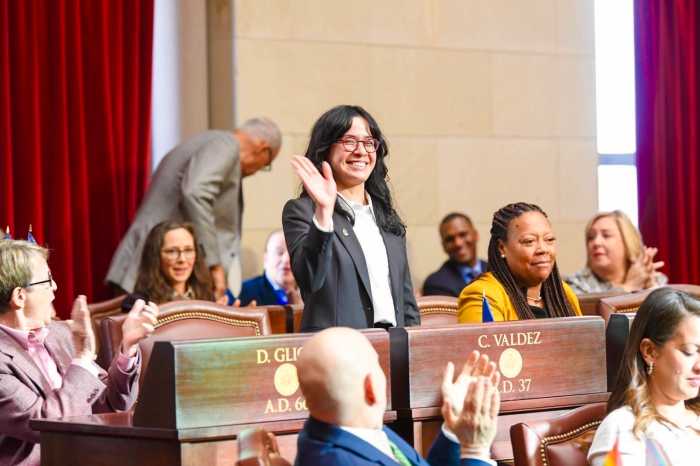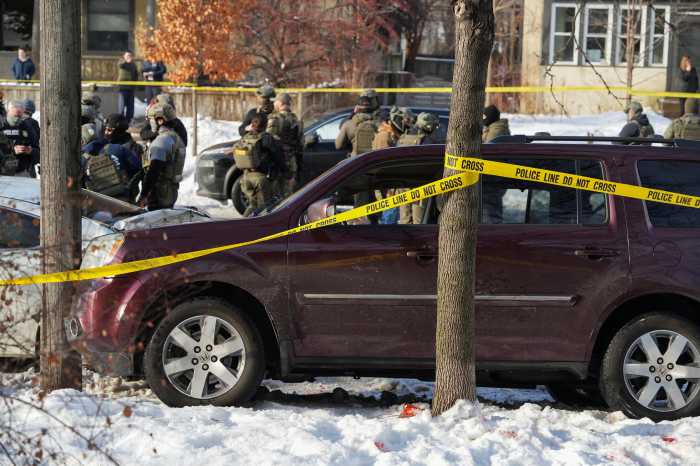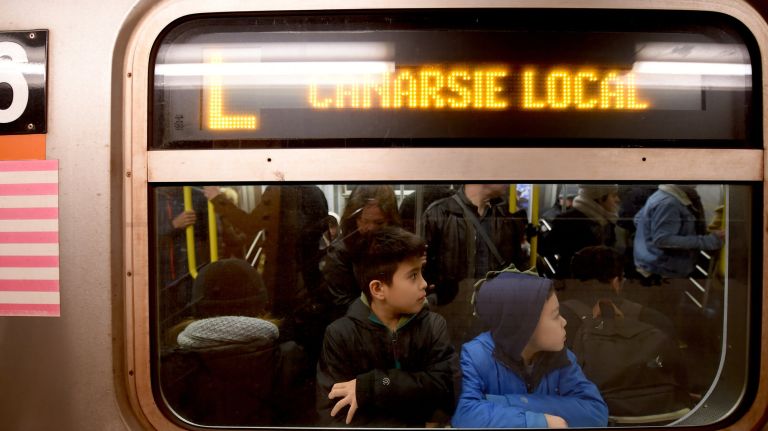
L train rehabilitation work will still be "disruptive," even as a full shutdown is avoided, the MTA said on Wednesday.
As the authority rehabilitates the Sandy-damaged Canarsie tunnel, it will be reducing L train service to 20-minute waits on weeknights and weekends — from Bedford Avenue through Manhattan — with reductions in service beginning as early as 8 p.m. on weeknights. Twenty-minute headways will kick in around 10 p.m. on weeknights and run through 5 a.m.
“We’ll be able to maintain service, but it will be a disruptive service on the L,” said MTA managing director Ronnie Hakim, who briefed reporters over the phone.
The call came before the authority began pitching its new plan to elected officials and advocates, but there are still many lingering questions relating to service, timeline and the cost of the project.
Despite the reductions in L trains, Hakim stressed that the plan was far less impactful than a full shutdown. The MTA believes about 95 percent of L train riders will still be able to take the line during the new rehabilitation strategy—which Gov. Andrew Cuomo announced in early January when he called off the full, 15-month shutdown of L service to and through Manhattan. Ninety percent of riders won’t see disruptions at all, according to Hakim.
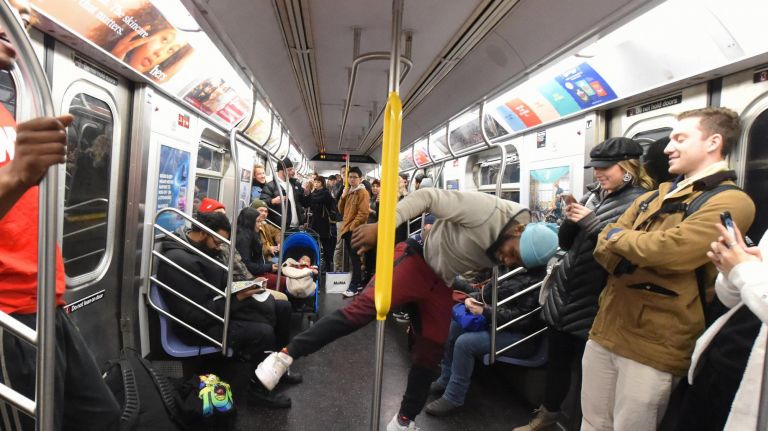
Hakim said the MTA will still carry out some of its plans for enhanced subway service during the service reductions and that alternative transit options are still evolving.
While the L train runs on 10-minute waits during the work between Canarsie and Lorimer Street, the authority will add more service on the 7, G and M lines. The authority opted against lengthening G trains, as originally planned.
Worried about crowding at Bedford Avenue, the MTA will run shuttle bus service in a loop to bring riders to connect to the L and G at Metropolitan Avenue/Lorimer Street and the J and M at Marcy Avenue, according to Hakim. M service will be rerouted during the work to run up to the 96th Street station in Manhattan, she said.
It’s still uncertain what will happen to the street-level plans that were originally drafted for a full shutdown—some of which have already been implemented. While M14 service will be increased, Hakim said she believed a 14th Street busway and HOV restrictions on the Williamsburg Bridge were likely not necessary.
While riders cheered the cancellation of the dreaded L train shutdown, experts, MTA board members and advocates worried that the governor pitched a last-minute, hastily put together plan that seemed more of a patch job than a full rehab.
Instead of replacing all of the damaged concrete bench wall in the L’s Canarsie tunnel, it will replace some sections but patch others, coating the wall with a fiber glass-reinforced polymer.
Of the roughly 35,000 feet of bench wall in the Canarsie tunnel, the MTA now knows about 5,000 feet would need to be demolished, according to Hakim.
The MTA hopes to start the rehabilitation work during the last weekend of April, as planned, with public outreach sessions to come, Hakim said.
But there are still other unknowns. The authority has not retained an independent consultant to review the plan—a measure several skeptical MTA board members had demanded.
The MTA is also still renegotiating its $477 million contract with the contractors tapped for the work and still hasn’t determined exactly how long the project will take, giving only an estimate of 15 to 20 months.
Brooklyn Borough President Eric Adams, whose staff was briefed on the rehabilitation developments Wednesday, felt the MTA was rushing into what has become a significantly different project.
“The MTA is steamrolling past the concerns of its own board, not to mention the concerns of millions of riders,” Adams said in a statement. “This is too big a project to shove through without real consideration and oversight.”
Transportation advocates were not pleased to see the vehicle restrictions on 14th Street and on the Williamsburg Bridge fall by the wayside.
“Transit riders, in order to keep riding transit and avoid getting in cars—the overall goal of the mitigation plan—are going to need as direct of a route as possible over the L train corridor,” said Danny Pearlstein, a spokesman for the Riders Alliance. “And that’s what the priority was supposed to provide. Without that priority, you’re going to have a lot more cars.”
Tom DeVito, senior director of advocacy for Transportation Alternatives, borrowed from the infamous Daily News headline in a statement, saying that the plan for 14th Street "could be summarized in one sentence: ‘City to bus riders: drop dead.’"
"New York City is in the middle of a multi-faceted transportation crisis," he continued, "and rolling back bold, innovative street plans like the 14th Street busway — which would dramatically improve reliability and speed for tens of thousands of daily riders — is abhorrent."
Mayoral spokesman Eric Phillips said the administration is still undecided on the busway and other street changes planned for the original shutdown — despite the MTA’s belief that the bus priority wouldn’t be necessary.
"As we learn more and more detail every day from the MTA about its closure of the L train, we’ll continue to design efforts and review existing plans to help affected riders," Phillips said in a statement.



